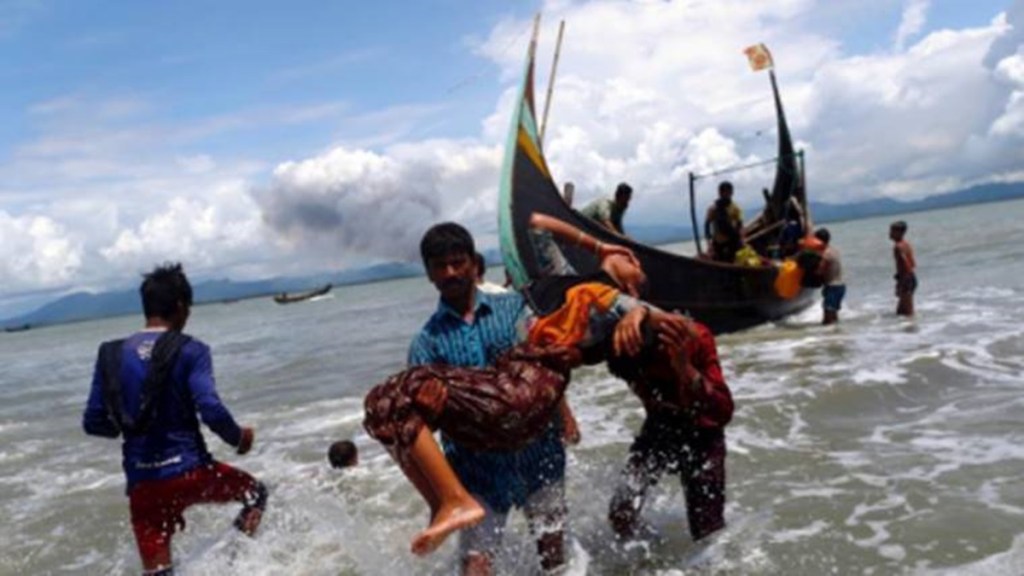By N Chandra Mohan
On August 17, there was only a fleeting moment that reaffirmed India’s long-standing tradition of welcoming those who sought refuge from persecution. A tweet of a Union minister stated that Rohingya refugees—a stateless minority who escaped from progroms in Myanmar—would be shifted to flats, provided with amenities and security in western New Delhi. Hours later, the Union home ministry clarified that these “illegal immigrants” would be held in a detention centre and deported. Far from being a U-turn, this has been the government’s position since 2017. The absence of a refugee policy, with India not being a signatory to the UN Refugee Convention of 1951, does complicate a humanitarian response to the Rohingya question.
India’s stance on the Rohingyas is not independent of its strategic engagement with Myanmar, with which it shares a 1,600-km border. Myanmar is our land link to the ASEAN and integral to our Neighourhood First and Act East policies. To promote connectivity, a $484-million Kaladan Multimodal Transit Transport Project linking the Kolkata port with Myanmar’s Sittwe port is being implemented. So is the India-Myanmar-Thailand highway. There is also a security dimension as insurgent groups in the North East have havens across the border, and India needs Myanmar’s cooperation to deal with them. India thus has adopted a twin-track approach of engaging with the ruling military junta while pushing for restoration of democracy.
Also read: Fifth Coulmn by Tavleen Singh: Shame
Myanmar’s military has viewed the Rohingyas as a threat to national security, framing them as “British-era farm coolies from Bangladesh”. Accordingly, it has pursued brutal strategies to relocate and otherwise to destroy them through mass killings, rape and arson as happened in 2017. The denial of Rohingyas as one of Myanmar’s indigenous peoples, however, does not stand historical scrutiny. Studies by GH Luce and Than Tun as well as ethno-linguistic studies carried out by some British East India Company staff dating back to the 1780s establish the integral presence of the Rohingya as a distinctly Muslim population of the then Arakan kingdom, according to Dr Maung Zarni’s article in the Inter Press Service in 2016.
The bouts of organised violence against the Rohingyas in 2012 and 2017 forced them flee Myanmar for safer havens in Bangladesh and India. Hard numbers are difficult to come by, but before 2017, the country was home to around 1.3 million Rohingyas, but now the count is down to 600,000 with Bangladesh absorbing 750,000 of them who are living in miserable conditions in refugee camps. Rohingya rights activists estimate that 1,100 Rohingyas live in Delhi with another 17,000 elsewhere in the country. Around 20,000 have left for Bangladesh this year amid fears of being deported. Now, with the Indian government indicating its intent to deport the Rohingyas, these numbers are bound to plummet further.
India’s stance on the Rohingyas has passed through three phases, according to K Yhome who wrote an issue brief on this topic for the Observer Research Foundation. After the violence in 2012, India’s external affairs minister visited Rakhine state and announced a package of $1 million. India also allowed the Rohingyas to enter the country. A few days later, the then UN High Commissioner for Refugees (and currently UN secretary general) Antonio Guterres visited India and expressed “high appreciation for India’s age-old tradition of tolerance and understanding which manifested itself in its current policy of protecting and assisting refugees” and adherence to the principle of non-refoulement and voluntary repatriation.
The second and third phases are co-terminus with the two terms of the ruling NDA regime and go against the grain of the first phase. On August 9, 2017, the minister of state for home affairs announced in Parliament that the government was planning to deport the Rohingyas as they were “illegal immigrants”. However, this hardline stance had to be nuanced as Bangladesh sought India’s help to deal with the refugee influx. On September 14, 2017, India launched “Operation Insaniyat” to provide relief assistance for the refugee camps in Bangladesh. According to Yhome, Delhi’s help fits into its desire to de-incentivise Rohingya refugees from entering into India. India’s position since 2017 was for their speedy return back home.
The third phase began shortly thereafter with India pitching in with development projects in the Rakhine state to create conditions for the return of the Rohingyas such as the building of pre-fabricated housing. This phase began soon after China stepped in with its “three-step solution” to the Rohingya crisis and the subsequent signing of the repatriation agreement between Bangladesh and Myanmar on November 23, 2017. India’s stance is that the only lasting solution of the Rohingya question lies in the development of the Rakhine state. But the imperative of a humanitarian response to their plight in India definitely calls for revisiting the need for a refugee policy to deal with those who seek sanctuary from persecution regardless of religion.
(The writer is an economics and business commentator based in New Delhi.)


